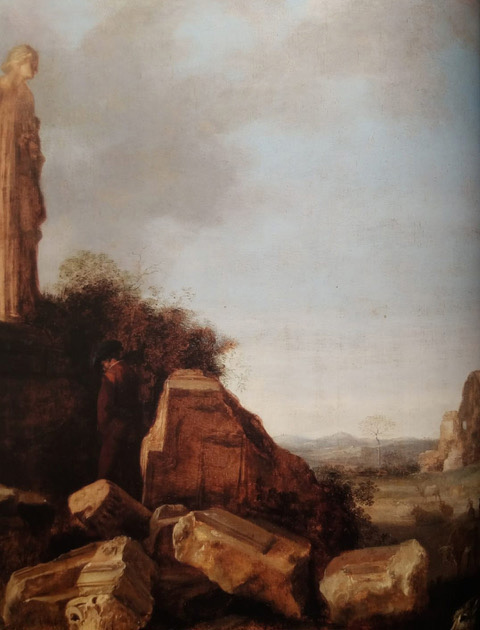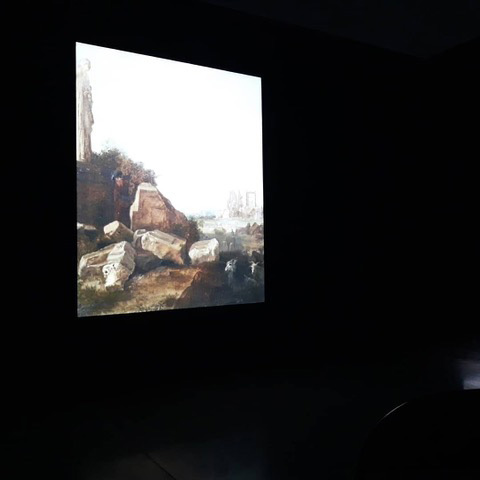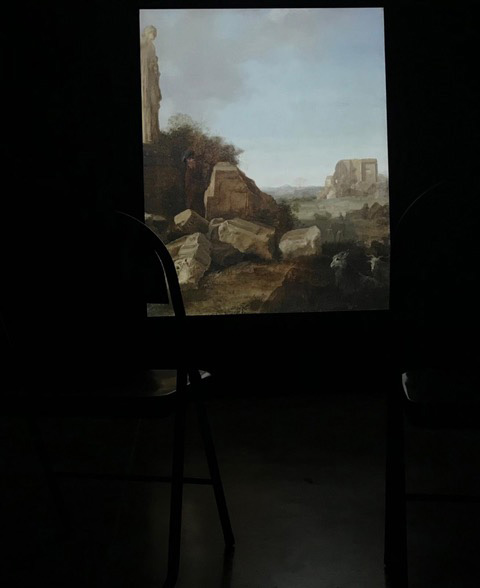On Cornelis
2020
Video projection and audio
Paesaggio con rovine e scene pastorali
Cornelis van Poelenburgh
Oil on wood panel
39 x 31.3 cm
1621-1623 ca.
INVT: CF2
Ariccia, Palazzo Chigi. Coleccion Ferrari
One Voice, One Image
Created and Curated by María Virginia Jaua
EACC (Castelló) and Centro Conde Duque, Madrid
In the late seventies, Andy Warhol invited his secretary and his friends (Victor Hugo, Ronnie Cutrone or Walter Steding) to create the Piss Paintings and the Oxidation Paintings. They consisted of spreading on the canvases, and from their inner entrails, as if they had a brush in hand, the urine that had been accumulated throughout the day or night.
Some fabrics had been coated with metallic copper primer. Scattered on the floor of the Factory, they received —just like Dánae— the golden shower…, and Voilà, finished works!…, surfaces of greenish and orange oxidations, organic forms, gestures of the genre that undoubtedly give shape and character to the work.
The Flemish painter Cornelis van Poelenburgh, lived in Rome during the early seventeenth century. He settled there in search of the beautiful ideal of the landscape, and like his contemporary Giovanni Battista Agucchi, who theorized on the subject, he delved into that natural world on the outskirts of the Eternal City, creating the work that we now contemplate .
What we see is a painting certainly protected by the sculpture of a vestal that makes us direct our gaze from above towards the world of the plain. In the middle of an archaeological encounter with classical capitals and cornices, on the left margin, a man urinates on these sacred stones… perhaps just like Andy’s friends, thinking about how uric acid and its immediate action on the marbles could affect them and transform the purity, greatness and triumphant glory of the past in a spell that is surreptitiously marked in a corner.
Cornelis, known as Satyr among his comrades the Bamboccianti, to the dessert defender of the arte della sregolatezza, that is, the art of debauchery, proposes us this urinating sculptor, who, without a chisel in his hand, is capable of renewing and dissolving the classical ideal into another matter or into other forms more liberating.


